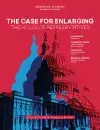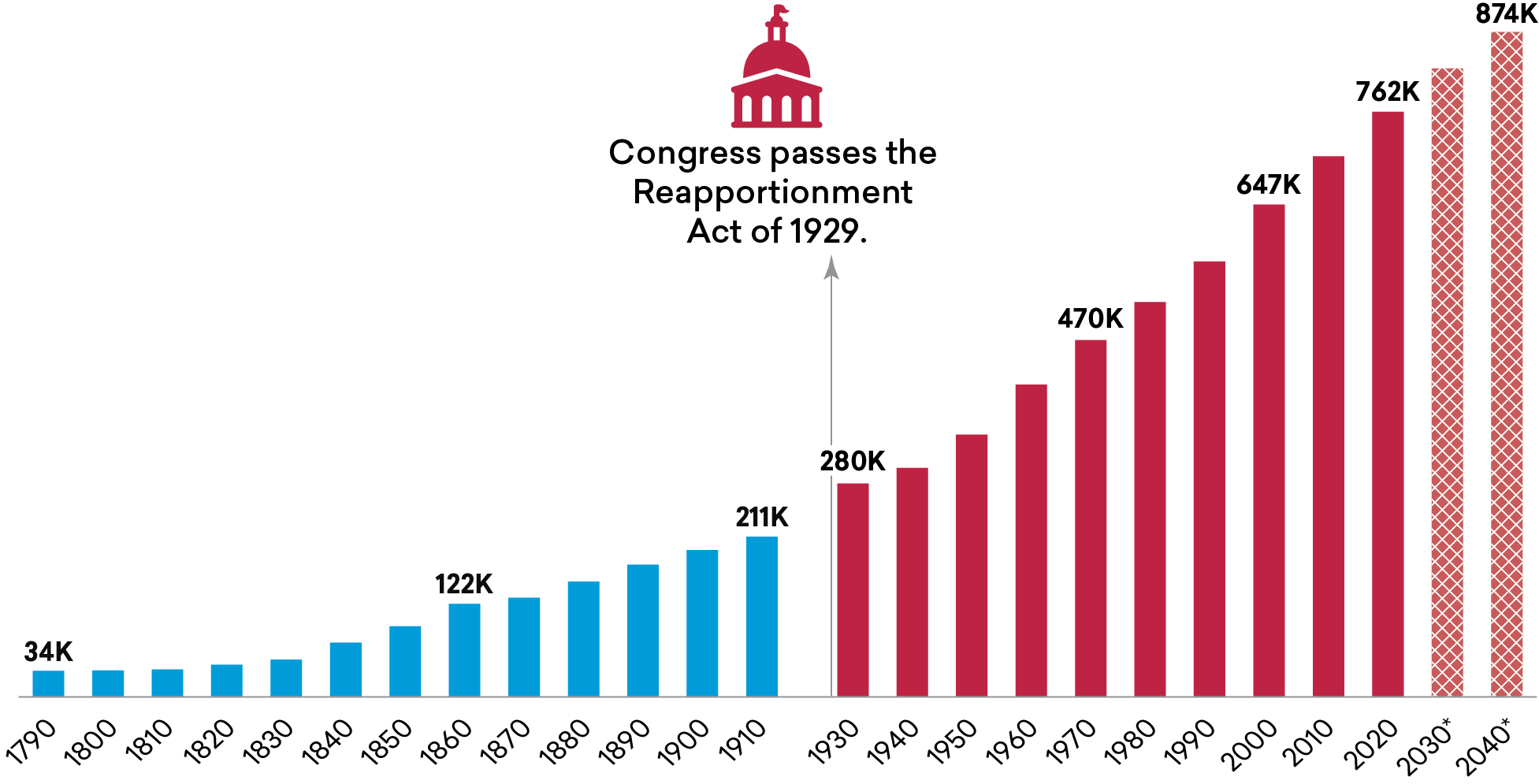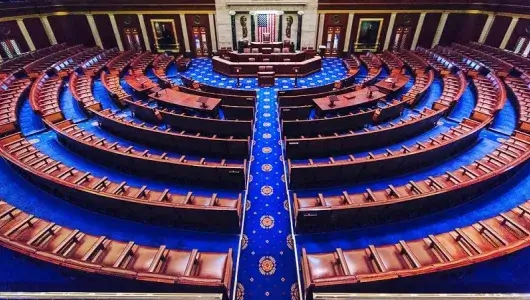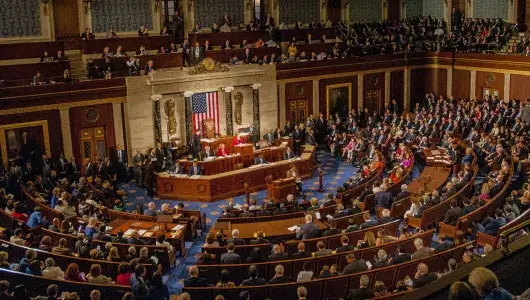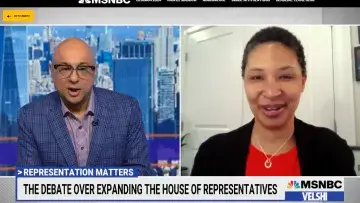-
What are some of the impacts of having large Congressional districts?
With Congressional districts as large as they are, it is difficult for Americans to make their voices heard on the issues when they are one of just 770,000. Additionally, many Americans, including retirees, veterans, and small business owners, require regular assistance from congressional offices, which are already overwhelmed by legislative responsibilities. Research has shown that voters from smaller districts are more likely to feel their congressperson did a good job keeping in touch and were more likely to approve of their representative.
-
Would enlarging the House change what it costs to run for Congress? Would it impact who runs?
It is more expensive, on average, to run for office in a large district than a smaller one – and that favors incumbents and other well-financed candidates. Adding more seats and reducing the size of districts could reduce the cost of running and create opportunities for a new class of candidates, which would be more likely to reflect the nation’s full demographic and ideological diversity.
-
How will enlarging the House impact the Electoral College?
Because of the large variance in the population size of different districts, some voters currently wield disproportionate power in the Electoral College. Enlarging the House would reduce the overrepresentation of small states in presidential elections and may reduce the possibility that the winner of the popular vote does not also win the election.
-
Is a constitutional amendment needed to make this change?
No constitutional amendment is required. The size of the House is set by statute, so a vote of Congress is all that is needed to give voters a better chance to meet and interact with their representatives and to take part in the democratic process.
-
Would enlarging the House advantage one party over the other?
Enlarging the House would not significantly advantage one party over the other. The authors of The Case for Enlarging the House of Representatives ran 10,000 simulations of the 2020 election at various House sizes: and at no size did either party gain more than a 3 percent advantage in their odds of controlling the chamber. Many House sizes saw no change at all. The expansion of the House would also entail the expansion of the Electoral College. The results of presidential elections, too, would be unchanged. The outcome of the last 12 presidential elections would be the same at most feasible House sizes, the only exception being the highly contested 2000 election.
-
How many seats should be added?
Our Common Purpose preliminarily suggests the addition of fifty seats but notes that a “precise number should be established through vigorous discussion and debate.” To that end, the American Academy convened a working group of scholars, thought leaders, and former elected officials and congressional staff to investigate proposals to enlarge the House. The working group debated the principles that should undergird a House expansion formula, surveyed extant proposals for House expansion, discussed the possible outcomes of expansion, and developed a dedicated report: The Case for Enlarging the House of Representatives.
The Case for Enlarging the House of Representatives proposes adding 150 seats, followed by regular expansion. This plan is rooted in the principle that Americans should not regularly lose representation in Congress. Since 1931, 149 seats have been shifted between states, as states regularly lose seats, even when their population is increasing. Because adding 149 seats would result in a House with an even number of seats (making tie-breaking difficult), we recommend adding one additional seat, for a total of 585. Going forward, Congress should increase by the number of seats necessary to ensure that states only rarely lose seats, as used to be the norm. The report also explains numerous other proposals that would also entail continuous expansion and would achieve similar benefits.
